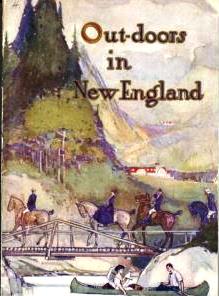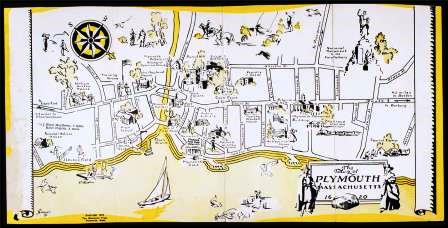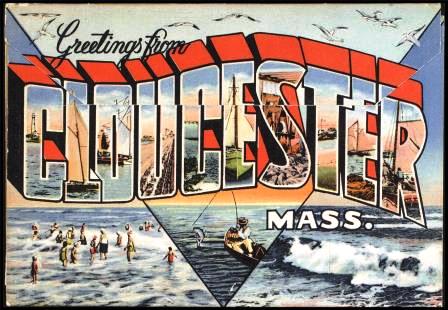By Katie Loughrey, Reader Services
As summer draws to its inevitable end, I am somewhat grateful (In case you haven’t noticed, it has been a hot one!) and somewhat wistful. Although I’ve been privileged to take several trips this season, I am someone always thinking of the next place left to explore, even if that place is as close as downtown Boston or a small piece of New England I haven’t yet seen in my lifetime of living here. Luckily, as a library assistant here at MHS and an aspiring archivist, I do always have an option to turn to when needing to be transported to a new place: the archives.
Quite the useful tool in my vicarious travels has been the Adam Matthew Digital online database Leisure, Travel and Mass Culture: The History of Tourism. This digital collection – available by subscription – highlights materials from several contributing institutions around the world, including the Massachusetts Historical Society, revolving around the birth and growth of travel and mass tourism between 1850 and 1980. The collection is made up of all sorts of ephemera from photographs, travel brochures, and ads to promotional tourism films. One can explore the collection by curated themes, country or region, contributing institution, or even within a set chronological timeline. It can be accessed online here at the MHS, or within any contributing or subscribing library.
Below I’ve highlighted a few items from our collections available on this database, and how they contribute to our understanding of how Americans traveled and toured New England in the past two centuries.
Many of the more eye-catching items are those tourism guides and brochures by transportation and tourism companies trying to entice consumers to be whisked away on a seasonal adventure of a lifetime. A prime example is this guide, Outdoors in New England, published in 1909 by the Boston & Maine Railroad General Passenger Department.

Inside this colorful volume, are nearly 50 pages of enthusiastic prose on the many leisure activities in the different states of New England, “the ideal, the perfect resting-up section of America.” Accompanied by both photographs and tri-colored illustrations of serene activities like boating and fishing, it captures the ever increasing narrative of the commodity of vacation as a respite from the tedium and stress of work and everyday life that was becoming available to the average American as railroads commercialized.

As the next decade approaches, more of these brochures became geared toward automobile travel, such as Real Tour to the Berkshires, published by the Real Tour Association of Lenox, MA. Including a fold-out map of the routes, the guide provides a detailed description of a scenic drive from New York through Connecticut and into the Berkshire area of western Massachusetts, with suggestions of accommodations and activities along the ride.


Aside from brochures and advertisements, a large part of our travel related collections on this database, and in general, are travel diaries. The diaries of Eva E. Blackwelder record her travels through Boston and surrounding towns, from winter 1938 to spring 1939. Eva’s entries are quite thorough, noting the weather, the sights seen, town histories learned on her tours and the quality, or lack thereof, of food at each of their accommodations. Not unlike myself, Eva seems to have kept most of the brochures, maps, photos and newspaper clippings collected along her journey to remember these places by. A notable realization as one leafs through these pages is how most of the sites she visited nearly a hundred years ago – the many stops of the Freedom Trail, Plymouth village, the House of Seven Gables in Salem – remain the draw for many tourists to this area today due to eastern Massachusetts’ historic past.

Eva E. Blackwelder Scrapbook [8], c.1938-1957.

Eva E. Blackwelder Scrapbook [Brochures], 1935.

Eva E. Blackwelder Scrapbook [Brochures], c.1938-1957.
Here’s a final nostalgic image from Eva’s journal – soon to be just a faint memory for Massachusetts travelers – physical turnpike tolls. On her way back into Boston at one point she writes:
The toll houses were constructed with large gates which swing across the way as reminders to the traveler that he must help pay for the road.
The toll rates for passing over the turnpike were 25 cents for one person with a carriage of 4 wheels drawn by four horses. Carts and wagons with 2 horses paid half this amount… horse chaise, 10 cents. A man on horseback 5 cents. Cattle one cent and sheep and swine 3 cents a dozen. According to the general turnpike laws no toll could be collected from a passenger on foot; nor could toll be collected from those going to or from public worship within the limits of any town.
It’s hard to decide which is more surreal – a 25 cent toll or dozens of sheep on I-90! Either way, I hope this post inspires you to venture out on one last day trip before it’s too late.

